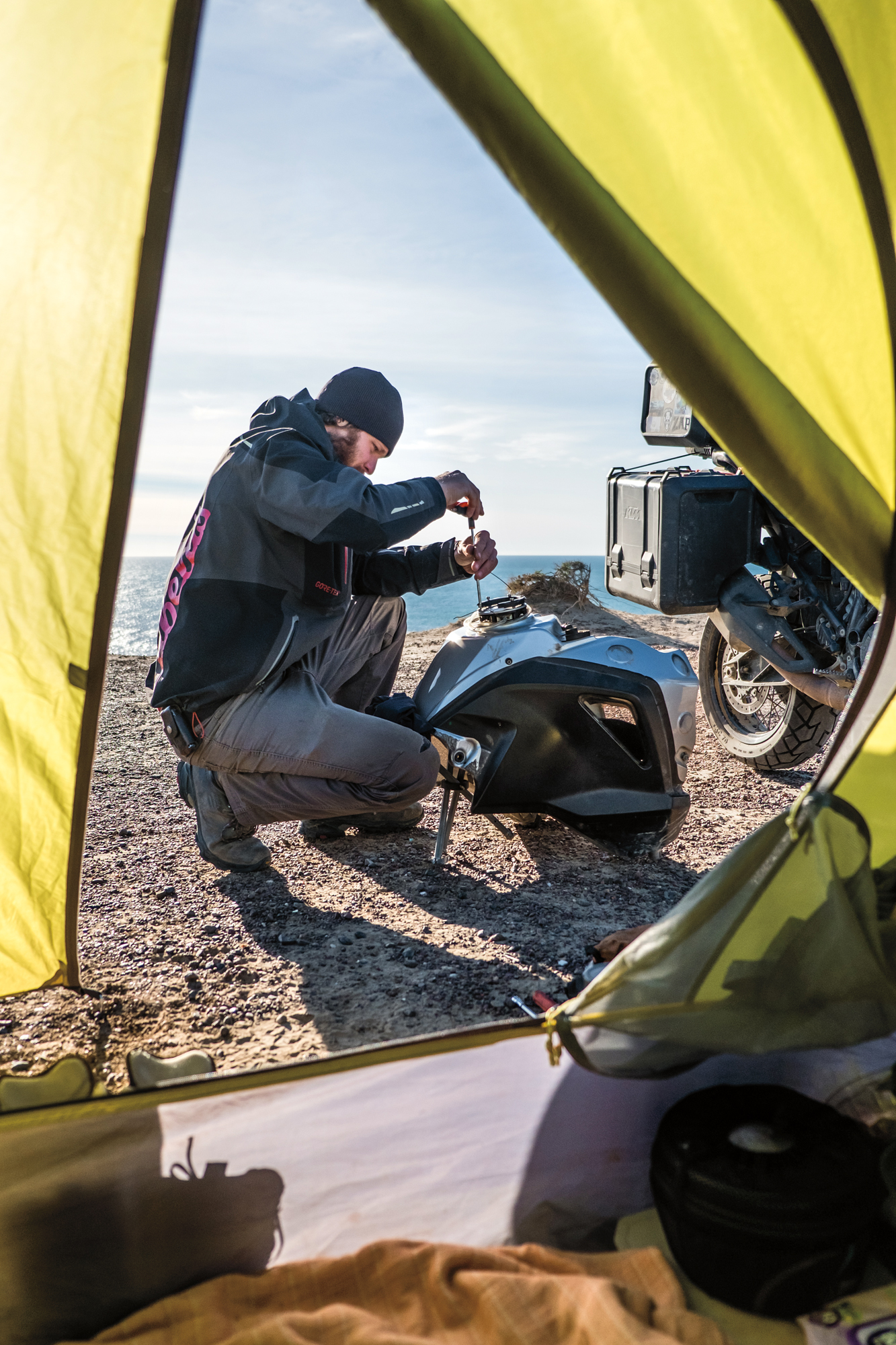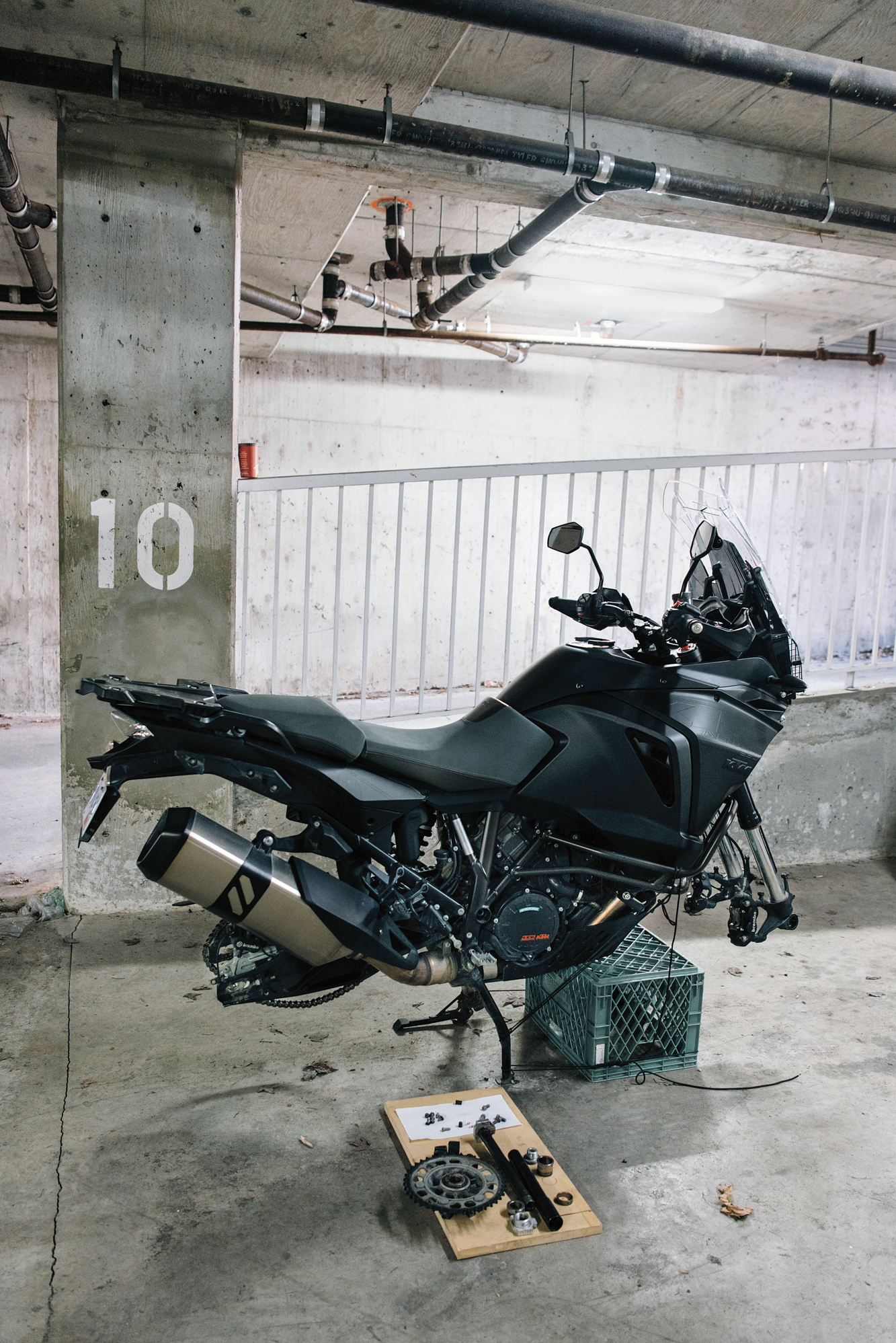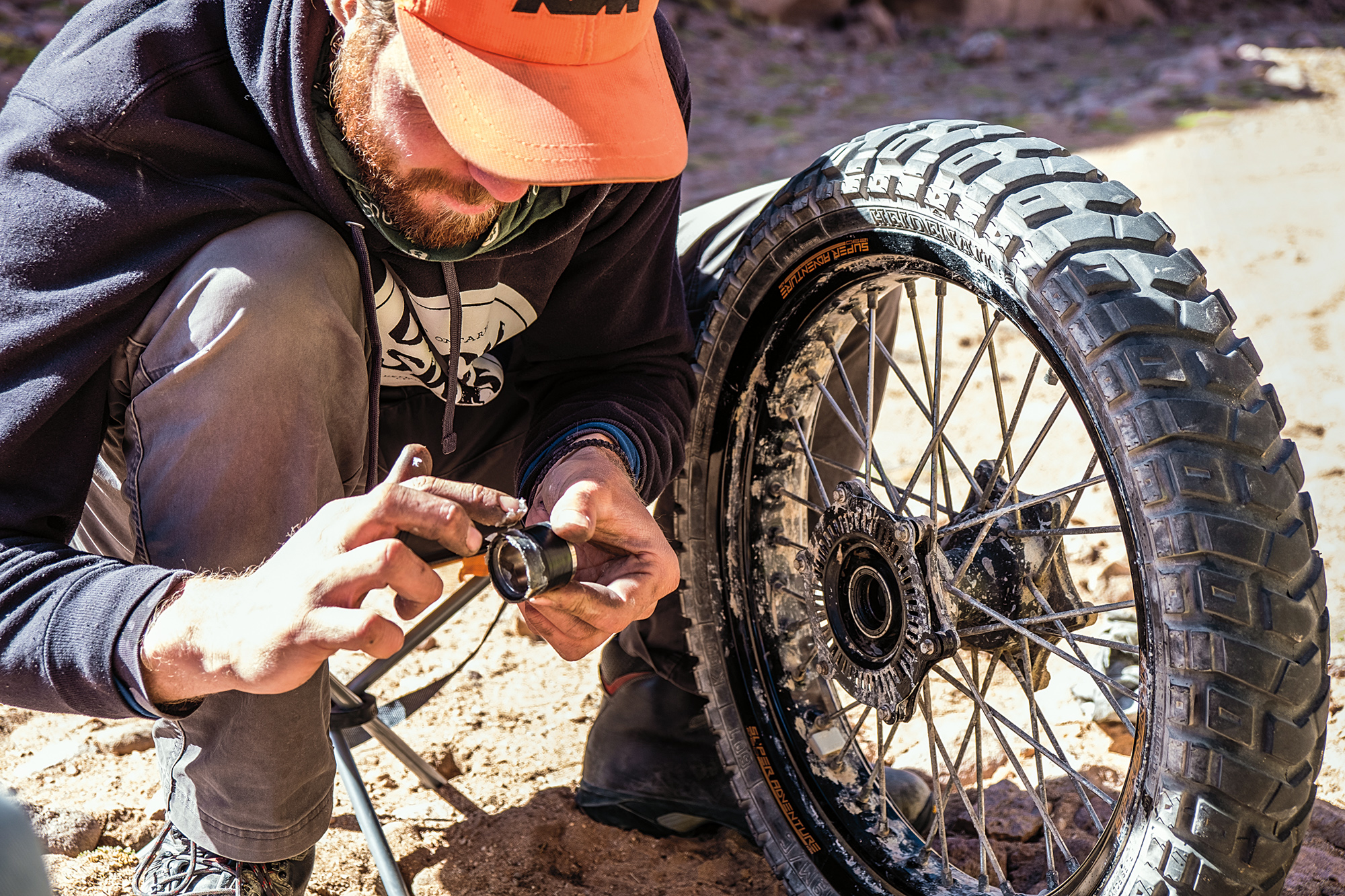This article was originally published in Overland Journal’s Gear 2020 issue.
After being on the road for 20 months through Latin America, when people ask me what I missed most about home, I have to answer that it’s my tools. Specifically, a shop full of tools with ample space to maintain and repair my motorcycle. Throughout our journey, it was an ongoing struggle to ensure our KTM 1290 was up to date with the maintenance. And, when disaster struck, a full-on battle to source parts and execute a repair. “I need a mechanic” is not a phrase I often speak. So, in a sense, we were on our own. This is the tale of a stubborn man’s navigation around the challenges of motorcycle maintenance abroad—struggles, victories, and acceptance.
“An ounce of prevention is worth a pound of repair,” said someone, somewhere. I have always believed in that principle and set out with a hardline attitude toward maintenance. More so than ever before, it was imperative to keep our bike running at its best. Breakdowns happen, but I’d be damned if it was going to be due to neglect. The fatal flaw in my plan was thinking that upkeep could be accomplished in the same manner that it would be at home. When you are constantly on the move, nothing is the same. All the resources I had at my disposal had been left in the rearview mirror, and a handful of what I deemed essential made its way into my panniers.
The seemingly easy tasks that revolved around maintaining my machine quickly spiraled into the same pain between my ears I got from full-on breakdowns. Why was it such a headache? Because I was spoiled living in North America—I could get that specific oil, or anything else for that matter when I needed it. The worst-case scenario was a special order and a bit of a wait, but at least I knew it was on the way. It didn’t help that there was no option to carry spares of the regularly used necessities like oil or tires. So I did my best to plan ahead, contacting companies for the items I was after. It was a coin toss, one that sometimes panned out but mostly did not. It seemed that the moment I started looking for something, it was nowhere to be found. Until I no longer needed it, and then it would be right in front of me at every local market.
The lack of available resources was frustrating but not the end of the world. By the time we reached Colombia, my expectations had dwindled to none. I could rarely find what I needed and got quite used to our little missions into big cities for parts, somewhere we would never go otherwise. At times though, even having my mindset in the right place wouldn’t get me through the day. There were only so many shops I could go into before losing my composure, giving up the search for a later day. Of all the resources in short supply, friendly people willing to help was never one of them. So I may have left empty-handed more times than not, but I made a lot of friends along the way.
There are a few key upgrades I did to the motorcycle before leaving to try and minimize the need for sourcing maintenance parts. Most of these ended up backfiring. For example, a simple one was installing a washable foam air filter, but a key ingredient needed is the air filter oil. It should have been easy to locate, but wasn’t. There were three countries in a row where I couldn’t seem to find it: Nicaragua, Costa Rica, and Panama. Shops would carry foam air filters, but no oil. After what felt like a quest for the holy grail, I finally found it. But the only option was to buy it in the world’s largest aerosol can. Nevertheless, I was a happy camper and sprayed it into a water bottle. It made its way into the pannier for the long haul, as I wasn’t about to go through that again.
Once I settled into knowing that things would get done when they could, not when I wanted, life was peachy. Why stress the little things? In fact, why stress the big things either? Instead, we learned how to prioritize when things went sideways. Survival was foremost because we were usually in the middle of nowhere when it hit the fan. Water, shelter, food—those are essentials when potentially marooned for a while. If I couldn’t diagnose or repair a problem on the side of the road, we would take baby steps to achieve resolution, finding a way to get to the next village or town, and then finding a hotel with WiFi and a spot to work.
A perfect example of this method is when some preventative maintenance left us stranded in the Peruvian jungle. We made a pit stop in Lima, Peru, since they had one of South America’s largest KTM dealers. It was a perfect opportunity to replace all the worn items and cover the basics. Fast forward through a week of remote touring which included two days to cross Peru’s coastal desert of Paracas National Reserve, and another three days to climb up and over the Andes and drop into the edge of the Amazon Basin—barren wasteland to soaring peaks, and finally thick humid rainforest. It was adventure at its finest until the bike sputtered and died—uh, oh. A couple of quick taps on the fuel pump and we were rolling again, but my mind was turning faster than the wheels. By the time it died again a few kilometers later, I had run a few possibilities through my head. Maybe a failed fuel pump? Or something to do with the filters I just replaced? Either way, it was not getting fixed here. Out came the priority checklist. After seven hours, and just before putting the tent up for the night, we secured a costly ride into the next town. We found our way to a place where I could drain the fuel and remove the pump; it turns out I had pulled a ground wire loose the previous week. Rather than kick myself for the error, I was thankful—it could have turned out very differently if that wire had come off in the desert.
I’ve since learned how to remove the fuel pump with a full tank in the middle of a barren desert because it was my only option at the time. We had driven 125 kilometers off an already isolated highway to find a colony of elephant seals, and the bike wouldn’t start. Diagnostics led me to clogged fuel filters. I had to remove the gas tank, sandwich some plastic bags between the tank and cap assembly, then turn it all upside down to get to the pump and filters without draining the gas. It is amazing what you can do when there is no choice but to figure it out.
I’ve also had to improvise an exploded wheel bearing in the heart of the Bolivian Altiplano with nothing more than the trash lying around. And there was the time I had to painstakingly file a rounded head on a 12-millimeter bolt down to an 11-millimeter one with the file on my pocket knife just so I could change the oil. I’ve also had to jumpstart a dead battery in the desolate plains of Argentina using a couple of sad lengths of steel tie wire. The point is that you make it work with what you have, and on a motorcycle that’s not much. However, there were times when the situation was simply beyond my capabilities; specifically, the dreaded electrical failures. In those instances, we were left with having to find a mechanic to sort it out for us.
There are two main reasons I like to stay away from the mechanic shop. First, I am stubborn. I enjoy doing the work on my motorcycle and don’t get the same satisfaction when someone else does it for me. Second, I am cheap. Long-term travel does not afford regular visits to the dealership. That being said, there is a fundamental principle behind being my own mechanic: I consistently put myself into situations where there isn’t someone else to fix it for me. It is easy to stick within your comfort zone and work on what you know how to do. But that doesn’t help you out of a jam. Years ago, I started taking on the role of maintaining my machines. It began with small, manageable tasks and slowly evolved until I could dive right into the motor. Along the way, I slowly built the confidence to keep going. That doesn’t mean I know it all, but the drive is there to figure it out. However, I am now at the crossroads of yet another facet of modern-day motorcycles— the aforementioned complex electronics. A big lesson taken from this last journey is that if I am going to ride a bike that’s littered with computer-controlled components, it is necessary to brush up on the tools and know how to maintain and repair those systems.
If I could offer a piece of advice for anyone looking to set off on a long journey in unfamiliar territories, it would be to learn how to work on your machine with the tools you’ll have at your immediate disposal, on your bike or person. If you find yourself on the side of a rocky volcano with a punctured tire, you’ll be thanking yourself if you have already changed a tire by hand, breaking the bead with your kickstand, then resetting it with a controlled explosion. Even though during the learning stage at home, you’ll be looking at your air compressor, wondering why you’re not using it. Try leaving your nice sockets in the case, and start quarter turning every bolt you work on. If you can’t master that in the comfort of your garage, you’re really going to struggle when it’s pouring down rain, and you’re lying in the mud, or when the wind is whipping sand into your eyes. By going through the drill with limited resources in a controlled environment, you are setting the stage for success.
As I pushed my motorcycle to its limits in Latin America, repairs became commonplace. Shifting my perspective in a positive way around these issues was as big a help as it would have been to have a support vehicle and a mechanic on standby. I separated my emotions from the moving parts, reminding myself at times that it was the bike that was broken, not my heart. In the end, the hard times make for the best stories. It didn’t matter how absurd the struggle was in the moment; we managed to find a solution. Going forward, I am keen to master the skills that can help in recurrent situations in the future, yet oddly excited to see what other mechanical trouble may come our way on the next grand adventure.





